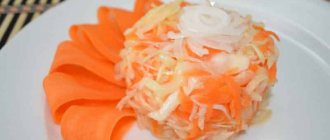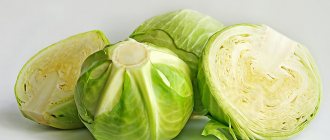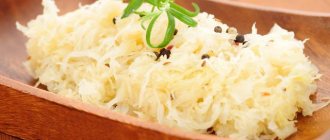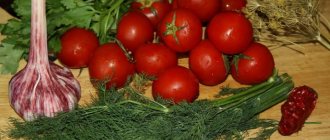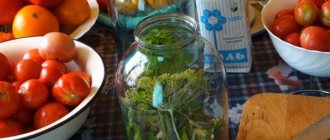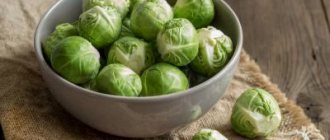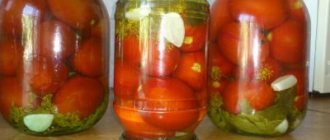If you want to prepare as much cabbage as possible for the winter, then it is better to immediately pickle the cabbage in a bucket. Of course, the ideal container for pickling is a wooden barrel, but getting it is not as easy as a bucket. And it takes up a fair amount of space and not every apartment can accommodate such a volume. In addition, the cost of wooden utensils is several times higher than that of ordinary enamel, and even more so plastic.
Is it possible to salt cabbage in a plastic bucket?
Of course, plastic buckets are the most accessible volume for making pickles, both in terms of cost and prevalence. They are durable and lightweight, come in a wide variety of shapes and sizes, and in recent years they have been used to package a variety of products, from dairy to fish. But during the fermentation process, acid is formed, which can interact with plastic. Therefore, it is important to understand that not every plastic bucket can be used to pickle cabbage in it.
You should not use colored plastic buckets for pickling, as they may contain various inappropriate impurities. It is better to use transparent or white ones, in which dairy products are most often sold. When purchasing a plastic bucket, you need to ask the seller for a certificate confirming the food use of the plastic from which the bucket is made.
Selecting and preparing cabbage
Any pickles turn out delicious if the ingredients for them are chosen correctly.
For salting in pieces, medium-sized heads of late varieties are recommended. Select vegetables that are firm and without damage. Before salting, remove the top green leaves and stalk.
Suitable for pickling:
- Wooden barrel. It has a number of advantages: environmentally friendly material allows the necessary amount of oxygen, which is important for salting, to pass through; the material prevents the growth of bacteria; products acquire a bright taste and aroma. Manufacturers offer barrels with volumes from 5 liters to 500 liters.
- Glass jar . The most common and affordable packaging. For pickling, take three- or five-liter containers, without cracks and with a smooth neck. Depending on the recipe, they are sterilized or simply washed. The preparations in jars are stored in refrigerators or cellars. Convenient for long-term storage.
- Enameled pan. Used during the cooking process. It is not recommended to store sauerkraut in such a container for a long time.
Preparing the bucket
Experts and experienced housewives believe that in any case, the taste of cabbage pickled in a plastic bucket will not be as rich and attractive as if it were pickled in a metal or glass container. But metal is different from metal. To pickle cabbage, exclusively enamel buckets are used.
Attention! Do not use aluminum or stainless steel utensils for salting. The acid reacts with the exposed metal and the cabbage turns gray and unfit for consumption.
If you don’t have any other bucket at hand other than a plastic one, you can prepare it for salting as follows:
- The new bucket should be washed several times with soda, and then, filling it with water, leave it like that for 24 hours. Then dry it thoroughly in the sun. This recommendation, however, applies to any new dishes, including enamel buckets.
- To reduce the contact of salted vegetables with the walls of the bucket, you can line the inside with food-grade plastic or place a plastic bag inside.
- In any case, it makes sense to use a plastic bucket only for the pickling process. After the cabbage has fermented, it is better to transfer it to glass jars for storage.
If you use an enamel bucket for pickling, it is important to check that there are no chips on the bottom or walls. Otherwise, the workpiece may acquire an unpleasant taste and color.
Features of storing workpieces
There are several options for storing sauerkraut cooked in a saucepan for the winter.
The first is to leave it for storage in the same container. In this case, it is necessary to remove the load, cover the vessel with a lid and send it to a cool place (increased fermentation will be observed in the warmth). In private homes, the basement can become a storage area for the product - here the product will not take up much space and will retain its freshness. In an apartment, an alternative would be a refrigerator, where the temperature of the chamber does not exceed +5°C. Sometimes a coating forms on the top layer of pickling in the pan - it must be removed with a spoon and thrown away.
Important! Jellied cabbage cannot be stored in an aluminum pan, since during the fermentation of the shredded vegetable, lactic acid is formed, which will oxidize the metal. This will result in an unpleasant odor and taste.
The second option involves transferring the finished product into 3-liter glass jars. The snack placed in the container must be filled with juice and covered with nylon (plastic) lids. The workpiece is also stored in a cool place. It should be taken into account that cabbage is perfectly preserved only when filled with brine, otherwise the quality of the product may decrease.
Another option is freezing. It is worth knowing that soon after defrosting, the product loses its beneficial and tasteful qualities, so you need to eat it quickly enough. When sending cabbage to be frozen, you should provide the amount of cabbage in the package that can be eaten in a short time.
Cabbage, pickled in a pan, is an excellent dish that will not only cheer you up on gloomy winter days with its unique taste and aroma, but will also fill the body with essential vitamins and minerals. Use the recipes provided and your dish will be appreciated.
Salting technology
Cabbage is pickled in a bucket using a completely traditional technology, which has been preserved unchanged since the times when exclusively wooden barrels were used for pickling vegetables.
- A few of the outer most contaminated leaves are removed from the cabbage heads. The cleanest and freshest of them are placed at the bottom of a well-washed and dried bucket.
- Heads of cabbage are chopped into strips 3-5 mm wide using a sharp knife or modern devices in the form of a grater.
- Shredded cabbage is placed in layers, 4-5 cm thick, in a bucket. Each layer is sprinkled with a small amount of salt and compacted with a wooden pestle (pustle).
- The bucket is not filled to the very top, leaving about 5 cm from the top edge so that there is room for fermentation.
- The topmost layer of cabbage is also covered with large, washed cabbage leaves. A double layer of gauze, previously scalded with boiling water, is placed on top of them.
- A wooden circle, slightly smaller than the diameter of the bucket, is placed on the gauze, and a load in the form of a stone or a jar of water is placed on it.
Comment! Since a load with a wooden circle underneath must be constantly covered with the oozing cabbage juice, limestone, brick, sandstone, slate or a cement product cannot be used for these purposes. - The bucket of pickled cabbage is left warm, usually at room temperature +18°+23°C. These are the most favorable conditions for fermentation. At lower temperatures, the process is greatly slowed down, and if it is too warm, the cabbage can quickly sour, soften and spoil.
- The beginning of the fermentation process can be determined by the foam that begins to stand out and which must be periodically removed.
- Twice a day, vegetables must be pierced with a long stick to release gases so that it reaches to the very bottom if possible.
- The salting process can be considered complete when the foam completely ceases to stand out, the brine becomes lighter, and the cabbage acquires a refreshing sour-salty taste and a pleasant crunchiness.
- If the cabbage still tastes a little fresh, then it needs to be given a few more days to ferment.
After completing the process, the finished dish must be placed in a cold place and ensure that it is constantly covered with brine.
Pickled in brine
Recipes for salting cabbage in a bucket for the winter are passed down from generation to generation in every family. The cold fermentation method makes the vegetable crispy and aromatic.
Products:
- carrots - 0.28 kg;
- laurel - 6 leaves;
- cabbage - 4.3 kg;
- black pepper - 12 peas;
- filtered water - 1.6 l;
- table salt - 60 g;
- granulated sugar - 60 g.
Filling with brine
- Wash the cabbage forks, peel and remove the stalk. Chop into medium sized strips. Peel the carrots thinly and grate them for vegetable salads.
- Rinse the bucket thoroughly and pour boiling water over it. Place the prepared foods tightly in layers, along with the seasonings.
- Pour the required amount of boiled, cooled liquid into a saucepan, add non-iodized salt and granulated sugar. Stir until the bulk ingredients are completely dissolved. Pour the prepared brine over the cabbage. Cover with gauze and put under a press. To prevent juice from leaking out of the bucket, the container must not be filled completely.
- Sauerkraut for the winter in a bucket for 3 days. It is important that the brine completely covers the vegetables. Do not forget to pierce with a wooden skewer 2-3 times a day, thereby releasing the accumulated air. The gauze needs to be rinsed and the resulting foam needs to be removed. Otherwise, the finished snack will be bitter. Refrigerate for storage.
Cooking recipes
In a bucket, cabbage can be pickled either according to the classic recipe, which uses nothing but cabbage, carrots and salt, or with a variety of additives in the form of spices, vegetables and berries.
Classic version
In the classic recipe, cabbage is salted in compliance with the following proportions:
- 10 kg cabbage;
- 200 g salt;
- 200 g carrots.
These proportions have been used in cooking for several hundred years, which is why the recipe is considered a classic.
Usually cabbage is pickled in a bucket using the technology described above. But housewives are often faced with the fact that they seem to be doing everything correctly, but the taste and consistency of pickled cabbage are far from perfect. The workpiece does not release enough juice and is not crispy at all. Most often, this is due to unfavorable growing conditions for cabbage - the vegetable simply does not absorb enough juice, and from the outside this has practically no effect on the heads of cabbage.
Attention! Sometimes this situation arises when using the latest varieties of cabbage, such as Amager, for pickling - immediately after harvesting, they are not very juicy and can taste bitter.
In this case, a slight improvement in the classic salting technology can help.
The shredded cabbage is simply placed in a bucket, and then carefully poured with the brine prepared in advance so that it is completely covered with it.
To prepare the brine, dissolve 250-300 g of salt in 5 liters of water. Salt can be dissolved faster and more reliably if the water is preheated to 100°C. The resulting brine must be cooled to room temperature before pouring.
Important! In any case, place a weight on top, because during the fermentation process the cabbage will tend to float to the top of the bucket.
Otherwise, you should proceed according to the manufacturing technology described above.
With lingonberries and cranberries
It is very tasty and healthy to pickle cabbage in a bucket with cranberry and lingonberry additives. Both of these berries contain benzoic acid, a substance that has excellent antiseptic properties, which further prevents the development of harmful microorganisms, especially during the initial period of fermentation.
According to the recipe for a standard 10-12-liter enamel bucket, you need to prepare:
- 10 kg cabbage;
- 200 g carrots;
- 200 g cranberries;
- 200 g lingonberries;
- 200 g salt.
You can pickle cabbage with berries either using traditional dry salting or adding brine. Vegetables and berries are placed in a bucket in layers; it is not recommended to press them down too much. The last layer should be cabbage, and on top, as usual, everything is covered with large cabbage leaves.
With bell pepper
Using bell peppers gives the salted cabbage an extra sweet and spicy kick. In addition, according to this recipe, the preparation is supplemented with spices, which, in addition to taste, contribute to better preservation of the finished product.
The following ingredients should be prepared:
- Several heads of cabbage with a total weight of 10 kg;
- 500 g sweet bell pepper;
- 200 g carrots;
- 200 g salt;
- 1-2 teaspoons of cumin or dill seeds;
- 15 black peppercorns;
- 10 peas of allspice.
Cabbage is pickled in a bucket using the technology described above. Sweet peppers for adding to pickling are peeled from seeds and cut into strips.
Time to pickle cabbage
How long does the process of pickling cabbage in a bucket take? The warmer the faster, this is how you can answer this question. The optimal temperature for successful fermentation is from +18 to +24 degrees .
At low temperatures, the fermentation process is delayed; at too high temperatures, harmful bacteria begin to multiply quickly. Instead of a tasty, healthy dish, you will end up with a fermented mass, unsuitable for consumption. It will take 5-7 days to prepare. When the brine became transparent, the foam stopped appearing, which means the cabbage was ripe. The surest way to check readiness is to try it. Sweet and sour, crispy... it means it's ready!
Terms and conditions of storage
You can store cabbage pickled in a bucket in the cellar, on the balcony, loggia, or even in the refrigerator if you first put it in three-liter jars. It is only necessary that the storage temperature be in the range from 0° to +5°C.
There are also more exotic ways to store pickled cabbage: it can be frozen and rolled into jars after preliminary sterilization. But the taste and consistency of the resulting product will, of course, be different, not so juicy and crispy.
Step-by-step recipe for salted cabbage in Armenian
We all know first-hand that our Armenians are a passionate people. This means that the dishes prepared by them are some kind of hot, spicy masterpiece. Such recipes are famous for their great popularity among the stronger half of humanity - I’m talking about men. I suggest pampering them and preparing a couple of spicy jars.
The main ingredient in this recipe, in addition to salt, is garlic and many other spices. If you plan to get Armenian-style salted cabbage as a result, then you must follow all the recommendations.
We will need:
- cabbage - 1.7 kg
- carrots - 1-2 pcs. (medium size)
- beets - 1 pc. (large) or 2 pcs. (small)
- garlic - 5-6 cloves
Marinade:
- water - 1.5 l.
- salt - 4 tbsp.
- sugar - 2/3 cup
- bay leaf - 2-3 pcs. (optional)
- black peppercorns - 7 pcs.
- allspice - 5 pcs.
- acetic acid 70% - 25 ml.
- red pepper - to taste
Preparation:
1. Let's prepare the vegetables
And let's start with perhaps the most important ingredient - cabbage. We clean the head of cabbage from the top leaves and rinse under cool water.
Cut it into four equal parts. Then remove the stalk and divide each piece into another 2-3 parts. Then we cut each resulting piece into equal cubes.
We divide them among ourselves. If denser fibers get in, I advise you not to use them in pickles, but rather put them aside.
2. Cut the garlic cloves lengthwise into thin slices. Then finely chop, but do not press.
3. Peel raw carrots and beets. Grate on a coarse grater and place in a deep container. Add chopped garlic here and mix everything thoroughly.
4. Now that all the vegetables are prepared, it’s time to start preparing the marinade. Pour one and a half liters of plain water into a small saucepan. Add the bulk ingredients salt, sugar, bay leaf, peppercorns and allspice (lightly crush in a mortar) and, if desired, add red pepper for spicy lovers.
Place the brine on the fire and bring to a boil. Then boil it for just a couple of minutes until the salt and sugar are completely dissolved.
5. While the marinade is being prepared, you can start laying out the vegetables. We will put them in a 3-liter jar in layers. We start with the most coloring, mixed carrots, beets and garlic. Next we put the cabbage, lightly compacting it with a rolling pin or by hand.
Be sure to make sure that the top and bottom layers are beets, carrots and garlic.
We repeat all the layers in the same way until the entire glass container is filled. Then pour in the prepared brine, which has been left on the table after boiling for 10 minutes.
Stir the mixture lightly with a spoon to release unnecessary excess air.
Then cover with a lid and leave at room temperature for a day. After the time has passed, we put it in the cellar, after two hours you can try the finished salad.
The longer the cabbage sits in the marinade, the tastier it turns out. Therefore, I advise you not to rush into the sample, but it is advisable to wait a little more time for 2-3 days.
Hot method of salting heads of cabbage
It is also called the blanching method. This option requires dividing the heads of cabbage into at least 2 parts.
You also need to cut out the stalks. Then we need to immerse the cabbage in boiling water for 5 minutes.
At the same time, prepare hot brine for pouring. The ratio of salt and water is as in the first option (40 g per 1 liter). But in this recipe, celery root (400 g) and garlic (100 g) are added. Grind the ingredients and add to the brine, then bring the mixture to a boil.
In this recipe, we can use wooden or glass dishes of any capacity. Lay out the pieces of cabbage, cover with a cloth, put pressure on them and pour in brine.
With this method, immediately place the pickled cabbage in a cool place. And be sure to take into account one nuance. After cooling, half-heads of cabbage settle to the bottom, and we can still add new ones. The main thing is that the circle does not remain on the surface, but is covered with liquid.
Using a boiling marinade, you can prepare wonderful spicy cabbage with beets in Georgian style.
The beautiful color of the product immediately attracts attention, and the taste is also excellent.
- Let's prepare the cabbage. Cut 1 head of cabbage into large pieces or eighths of a head of cabbage.
- Cut beets (1 medium) into thin slices.
- Celery greens and hot pepper (1 small pod) in small pieces.
- Garlic. We take the amount of spicy vegetable to taste. Recommended 5-6 cloves.
- Place food in containers in layers. Sprinkle the cabbage with garlic, pepper and herbs.
- Prepare the marinade. For 1 liter of purified water, add 1 tablespoon of sugar, salt and vinegar. In general, take these ingredients to your taste. If you increase the amount of salt a little, the cabbage will be ready faster. Boil the marinade and pour over the cabbage so that the liquid covers the vegetables.
- We keep it in a warm room for three days, then cool it.
